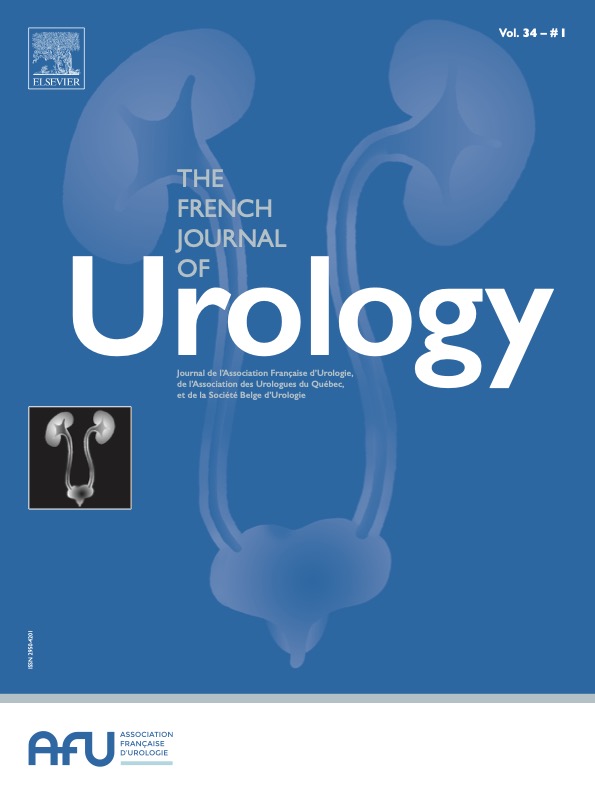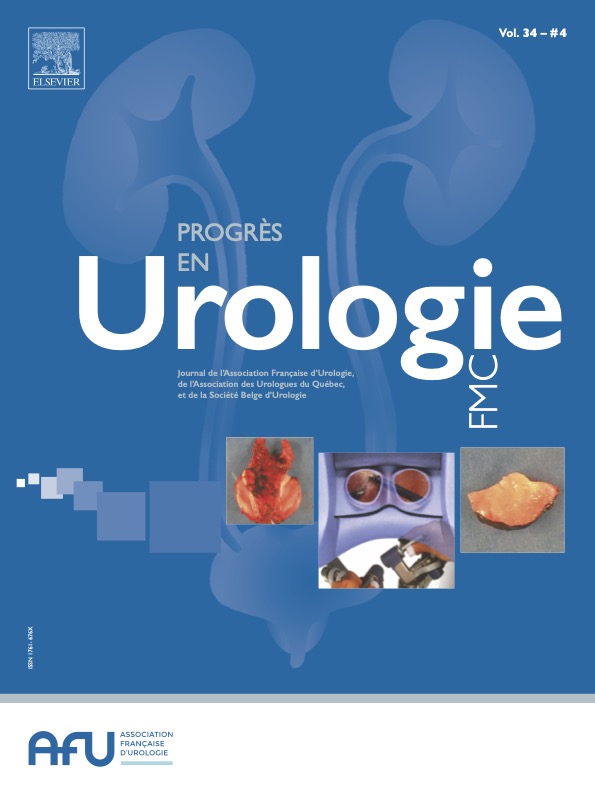Upper urinary tract stones, their complications and their management are all risk factors of kidney function impairment, especially because some patients with stones already have kidney disease.
Two studies [1, 2] that included 55,000 and 1340 patients, respectively, showed that the different stone management approaches were associated with a relative risk of kidney function impairment of 1.5. A meta-analysis published in 2017 [3] that included more than 4.7 million patients confirmed that the relative risk of kidney failure was 1.52 in patients with urinary stone disease.
In the case of ureteral stone impaction, the risk factors of kidney function worsening were advanced age and hypertension [4].
Among patients with pre-existing chronic kidney disease and undergoing treatment for bilateral obstructive stones, 28% had progressed to stage 5 chronic kidney disease at 1 year, despite the placement of a nephrostomy tube before stone treatment [5]. Prognostic factors of unfavorable outcome were combined cortical width, proteinuria, positive urine culture, and glomerular filtration rate (GFR) nadir after the first urine collection [5].
In patients with chronic kidney disease, renal stone treatment by extracorporeal shock wave lithotripsy (ESWL) slows disease progression. A study [6] assessed kidney function changes in 131 patients with GFR between 15 and 60mL/min/1.73 m2 and mean kidney stone size of 21mm. The authors found a significant slowing of disease progression in patients treated by ESWL in comparison with untreated patients [6].
In a systematic review of the effect of ureteroscopy and percutaneous nephrolithotomy [7] on kidney function, Reeves et al. [8] showed that these two techniques did not significantly impair kidney function. However, they identified some risk factors of kidney function impairment: chronic kidney disease, diabetes, and hypertension. Multiple access tracts by standard PCNL, but not by mini-PCNL, were an additional risk factor of kidney function impairment [8].
|
|
Conclusions of the literature data |
The various techniques used to treat upper urinary tract stones generally do not alter kidney function in patients with normal kidney function and can sometimes improve kidney function or slow its deterioration in patients with chronic kidney disease (level of evidence [LOE] 2.
Risk factors of significant kidney function impairment include pre-existing chronic kidney disease, hypertension, diabetes, and multiple access tracts by standard PCNL (LOE2). (Recommendation Table 1).
|
| Management of bilateral stones |
Several studies assessing the simultaneous treatment of bilateral renal and ureteral stones were identified. Some studies compared simultaneous and two-stage treatment. Different techniques were evaluated (ureteroscopy, ureterorenoscopy, PCNL, mini-PCNL, laparoscopy).
Several retrospective [9, 10, 11, 12] and prospective [13] studies reported that performing bilateral one-stage PCNL or mini-PCNL is associated with increased morbidity, mainly bleeding. In agreement, the transfusion rate after bilateral procedures was twice the rate after two-stage treatments [12]. Other studies did not find any difference in terms of complications between the two strategies, but they were often carried out in expert centers [14, 15]. The systematic review by Geraghty et al. [16] confirmed that expert centers obtain better outcomes with PCNL and less morbidity. Three meta-analyses also found better results of bilateral PCNL (efficacy and morbidity) in centers with high patient volumes [16, 17, 18].
According to a systematic review followed by a meta-analysis [17], the morbidity of concomitant bilateral ureteroscopy was higher than that of two-stage ureteroscopy. Conversely, morbidity was comparable with synchronous bilateral ureterorenoscopy, unilateral ureteroscopy, and asynchronous bilateral ureteroscopy [19]. Some authors highlighted the risk of postoperative anuria in patients without postoperative ureteral stenting after bilateral synchronous ureterorenoscopy [20].
|
|
Conclusions of the literature data |
Compared with asynchronous treatment of bilateral kidney and ureteral stones, synchronous treatment displays:
• | comparable efficacy (LOE3);
|
• | significantly longer operating time (LOE3);
|
• | more bleeding in case of PCNL (LOE3);
|
• | higher risk of anuria and the need for additional procedures in the absence of postoperative ureteral stenting (LOE3).
|
Recommendation Table 2
|
| Management of stones in patients with solitary kidney |
The different treatments were evaluated (PCNL, ureteroscopy, ureterorenoscopy, ESWL).
PCNL was more effective than ureterorenoscopy for larger kidney stones, with lower retreatment rate than the other techniques [21]; however, morbidity was higher, especially in case of multiple access tracts [22]. The systematic review by Pietropaolo et al. [23] on these different techniques confirmed that morbidity was higher after PCNL, especially bleeding. Post-intervention kidney function was stable or even improved in 90% of patients with solitary kidney after PCNL [24]. In patients with stage 2 to 4 chronic kidney disease, kidney function might improve after PCNL [25]. Multiple PCNL access tracts have been associated with kidney function impairment and increased bleeding risk [26].
The risk of anuria was higher in the absence of postoperative stenting [27].
Long operative time might be a negative prognostic factor of complications [28, 29].
Retreatment rate was lower with PCNL than with ureterorenoscopy (16% vs. 63%) [30]. Retreatment rate might be higher after ESWL compared with endoscopic techniques (2.2 sessions vs. 1.06) [31].
Outcomes were better when PCNL and ureterorenoscopy were combined, compared with mini-PCNL alone (91% vs. 65%) [32].
|
|
Conclusions of the literature data |
• | Outcomes were better when PCNL and ureterorenoscopy were combined, compared with mini-PCNL alone (91% vs. 65%) [ 32]. |
• | PCNL is more effective than other techniques for large stones in patients with solitary kidney (LOE3).
|
• | In patients with solitary kidney, PCNL is associated with higher morbidity than other treatments (LOE3).
|
• | The multiplication of PCNL tracts increases morbidity (bleeding) and the risk of kidney function impairment (LOE3).
|
• | Combining PCNL and ureterorenoscopy is effective with acceptable morbidity (LOE3).
|
• | The absence of postoperative stenting increases the risk of postoperative anuria (LOE3).
|
Recommendation Table 3
Les calculs du haut-appareil urinaire et les complications qu’ils provoquent ainsi que les traitements qu’ils nécessitent sont autant de facteurs de risque d’altération de la fonction rénale, d’autant qu’il existe déjà chez certains patients une insuffisance rénale.
Deux équipes ont mené des études [1, 2] portant respectivement sur près de 55 000 et 1340 patients ; les résultats montrent que les différents traitements des calculs s’accompagnaient d’une altération de la fonction rénale avec un risque relatif de l’ordre de 1,5. La méta-analyse publiée en 2017 [3] portant sur plus de 4,7 millions de patients a confirmé que le risque relatif d’insuffisance rénale était de 1,52 chez les lithiasiques.
En cas de calculs urétéraux impactés, les facteurs de risque d’aggravation de la fonction rénale étaient l’âge avancé et la présence d’une hypertension artérielle [4].
Chez les patients déjà insuffisants rénaux pris en charge pour des calculs bilatéraux obstructifs, malgré un drainage de la voie excrétrice préalable au traitement des calculs, il a été montré que 28 % d’entre eux évoluaient vers une insuffisance rénale de grade V à 1 an [5]. Les facteurs pronostiques d’évolution défavorable étaient l’épaisseur corticale combinée, la protéinurie, l’ECBU positif et le nadir du DFG après le drainage premier des urines [5].
Chez les patients insuffisants rénaux, le traitement par LEC des calculs rénaux ralentit la progression de l’insuffisance rénale. L’étude de Yoo [6] a porté sur 131 patients dont le DFG était compris entre 15 et 60mL/min/1,73 m2 et dont les calculs rénaux mesuraient en moyenne 21mm. En comparant l’évolution de la fonction rénale entre le groupe des patients traités par LEC et le groupe de patients non traités, les auteurs ont montré un ralentissement significatif de la progression de l’insuffisance rénale dans le groupe traité par LEC [6].
Dans une revue systématique portant sur les conséquences de l’urétéroscopie et de la NLPC sur la fonction rénale, Reeves et al. [7] ont montré que, généralement, ces deux techniques n’altéraient pas significativement la fonction rénale. Toutefois, certains facteurs de risque d’altération de la fonction rénale ont été mis en évidence : la présence d’une maladie rénale chronique, un diabète et une HTA. La réalisation de trajets multiples de NLPC standard a été considérée comme un facteur de risque supplémentaire d’altération de la fonction rénale, ce qui n’a pas été démontré pour la mini-NLPC [7].
|
|
Conclusions des données de la littérature |
Les différentes techniques utilisées pour traiter les calculs du haut-appareil urinaire n’altèrent généralement pas la fonction rénale des patients chez qui elle est normale et peuvent parfois améliorer la fonction rénale ou ralentir sa dégradation chez les insuffisants rénaux (NP 2).
Les facteurs de risque d’altération significative de la fonction rénale sont : l’insuffisance rénale préexistante, l’HTA, le diabète, la multiplication des trajets de NLPC standard (NP 2) (Tableau de recommandations 1).
|
| Traitement des calculs bilatéraux |
Plusieurs études évaluant le traitement simultané des calculs bilatéraux rénaux et urétéraux ont été identifiées. Certaines études ont comparé le traitement simultané avec le traitement en deux temps. Les différentes techniques ont été évaluées (urétéroscopie, urétérorénoscopie, NLPC, minimal, laparoscopies).
La réalisation d’une NLPC ou d’une minimal bilateral en un temps sable s’accompagner d’une morbidité accrue, essentiellement hémorragique, telle que rapportée dans plusieurs études rétrospectives [8, 9, 10, 11] et prospectives [12]. Le taux de transfusion était deux fois plus élevé en cas de geste bilatéral [11]. D’autres études n’ont pas rapporté de différence en termes de complications entre les deux stratégies, mais il s’agit souvent d’études menées dans des centres experts [13, 14]. La revue systématique de Geraghty [15] a confirmé que les centres experts obtenaient des résultats meilleurs avec la NLPC et une morbidité moindre. Les méta-analyses, rapportent également que l’efficacité et la morbidité de la NLPC bilatérale sont plus favorables dans les centres à gros volumes de patients [15, 16, 17].
La morbidité de l’urétéroscopie bilatérale synchrone serait plus élevée que celle de l’urétéroscopie bilatérale asynchrone, d’après une revue systématique suivie d’une méta-analyse [16]. Celle de l’urétérorénoscopie bilatérale synchrone semble comparable à celle de l’urétéroscopie unilatérale et à celle de l’urétéroscopie bilatérale asynchrone [18]. Certains auteurs ont mis en avant le risque d’anurie postopératoire après urétérorénoscopie bilatérale synchrone chez les patients n’ayant pas eu de drainage urétéral postopératoire [19].
|
|
Conclusions des données de la littérature |
Par comparaison au traitement asynchrone des calculs bilatéraux rénaux et urétéraux, le traitement synchrone s’accompagne :
• | d’une efficacité comparable (NP3) ;
|
• | d’une durée opératoire significativement plus longue (NP3) ;
|
• | d’un saignement plus important en cas de NLPC (NP3) ;
|
• | d’un risque d’anurie et de nécessité de geste complémentaire plus élevés, en l’absence de drainage postopératoire (NP3).
|
Tableau de recommandations 2
|
| Traitement des calculs sur rein unique |
Les différents traitements ont été évalués (NLPC, urétéroscopie, urétérorénoscopie, LEC).
La NLPC s’est montrée plus efficace que l’urétérorénoscopie pour les calculs rénaux les plus volumineux avec un taux de retraitement moins important que pour les autres techniques [20] mais a généré une morbidité accrue surtout en cas de trajets multiples [21]. La revue systématique de Pietropaolo [22], évaluant les différentes techniques, a confirmé que la morbidité de la NLPC était plus élevée, en particulier en ce qui concerne le saignement.
La fonction rénale postopératoire semble stable voire parfois meilleure dans 90 % des cas après NLPC sur rein unique [23]. Chez les patients ayant une insuffisance rénale de stade 2 à 4, la fonction rénale semble améliorée après NLPC [24]. La multiplication des trajets de NLPC semble accompagnée d’une altération de la fonction rénale et d’une augmentation du risque hémorragique [25].
Le risque d’anurie était plus élevé en l’absence de drainage postopératoire [26].
La durée opératoire serait un facteur pronostique péjoratif de complications [27, 28].
Le taux de retraitement était plus faible en cas de NLPC comparé à l’urétérorénoscopie (16 vs 63 %) [29].
La LEC semblait s’accompagner d’un taux plus élevé de retraitement par comparaison aux techniques endoscopiques (2,2 sessions vs 1,06) [30].
Les traitements combinés associant la NLPC et l’urétérorénoscopie ont démontré de meilleurs résultats que la mini-NLPC seule (91 vs 65 %) [31].
|
|
Conclusions des données de la littérature |
• | La NLPC est plus efficace que les autres techniques pour les calculs les plus volumineux sur rein unique (NP3).
|
• | La NLPC sur rein unique s’accompagne d’une morbidité plus élevée que celle des autres traitements (NP3).
|
• | La multiplication des trajets de NLPC entraîne une augmentation de la morbidité hémorragique et du risque d’altération de la fonction rénale (NP3).
|
• | Les techniques combinées associant NLPC et urétérorénoscopie sont efficaces au prix d’une morbidité acceptable (NP3).
|
• | L’absence de drainage postopératoire expose au risque d’anurie postopératoire (NP3).
|
Tableau de recommandations 3
The authors declare that they have no competing interest.









